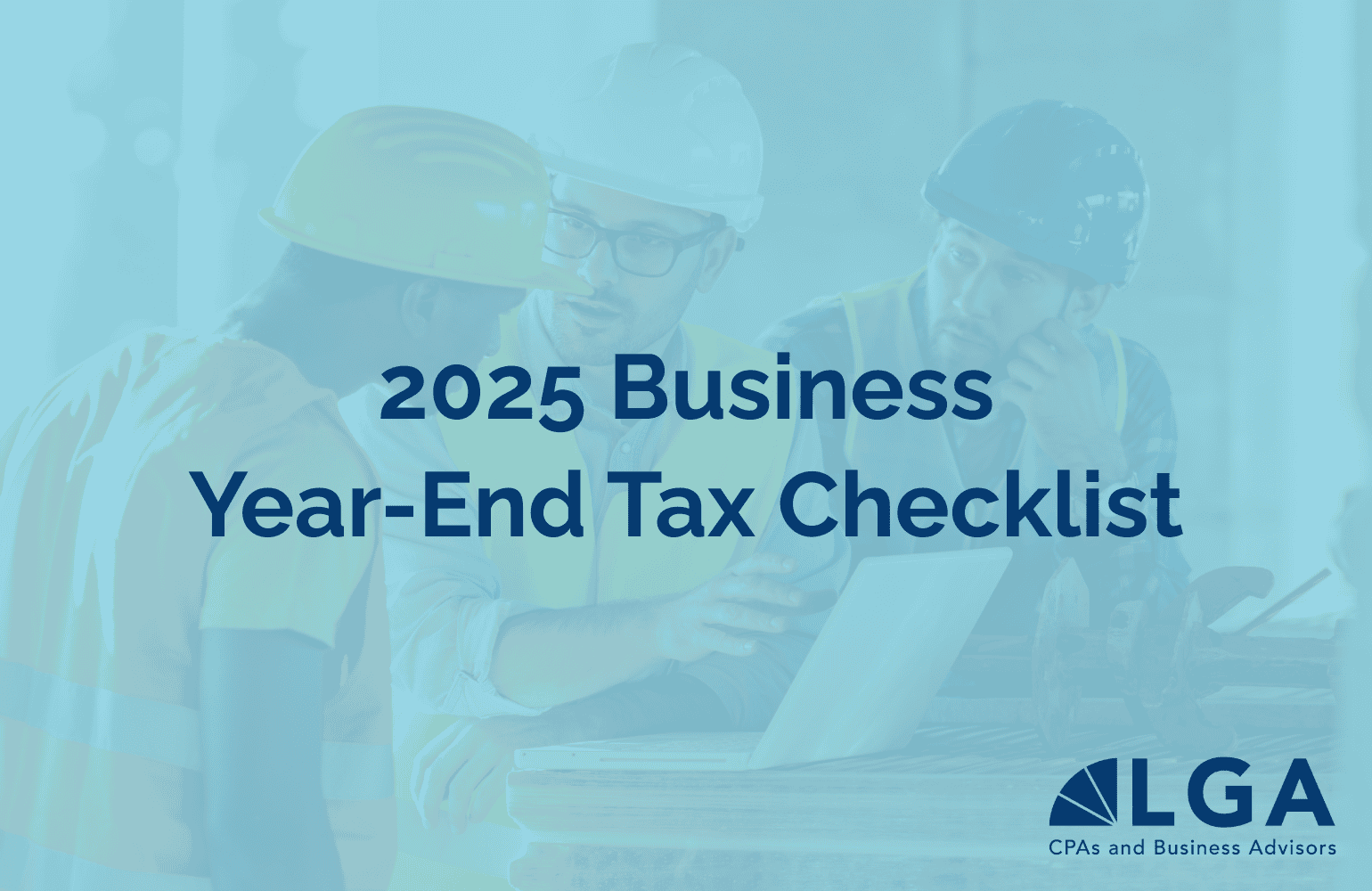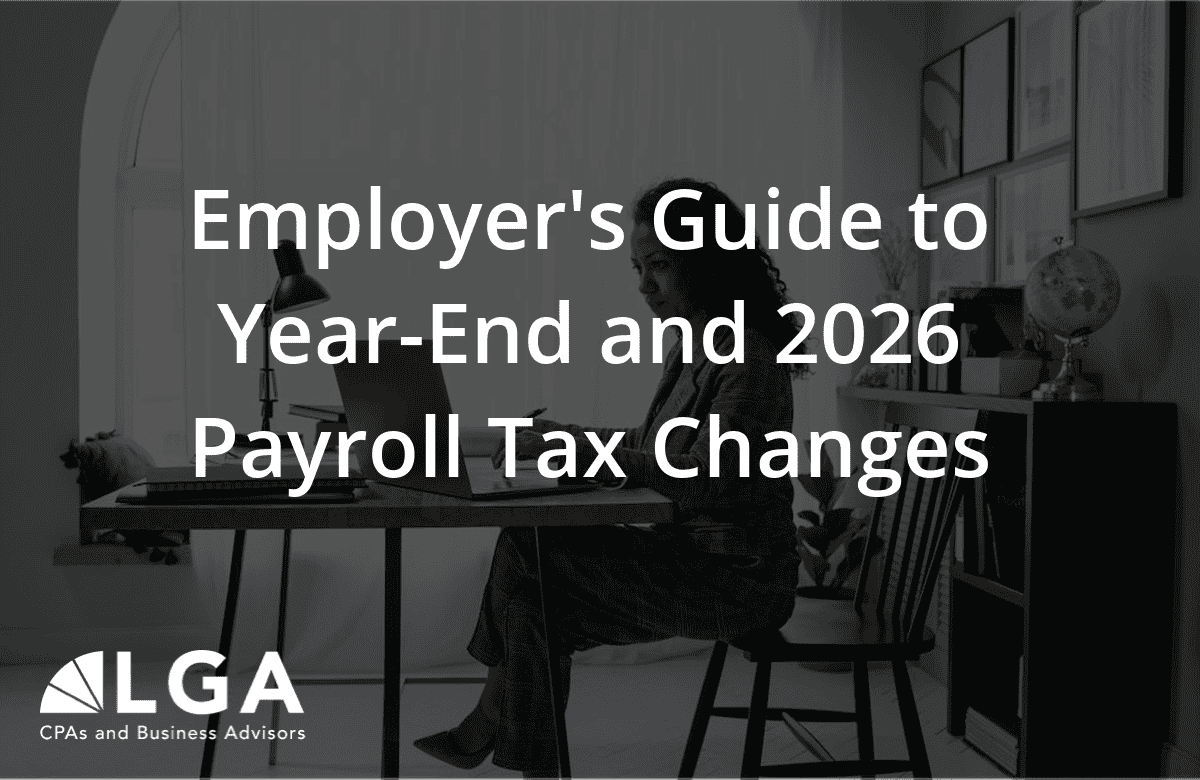
For construction companies and their owners, proper tax planning can be of tremendous value and a necessary tool for success. Considering the rapid-fire delivery of newly proposed and enacted legislation, taking a step back to consider the effects on tax planning is more important than ever.
There are several ways for contractors to leverage opportunities to save money and minimize their personal and business tax liabilities. However, keep in mind that due to financial reporting requirements to banks and bonding companies, etc. it is crucial to balance the financial reporting with the tax deferral. Here are some of the top deductions, credits, and strategies that could prove advantageous for construction companies and their owners.
Section 179D Deduction
Section 179D of the Federal Tax Code outlines the Commercial Building Energy-Efficient Tax Deduction. While the deduction was previously set to expire in 2020, it is now permanent, thanks to the Consolidated Appropriations Act of 2021.
This deduction allows owners of new or existing buildings to claim a tax deduction of up to $1.80 per square foot when they install energy efficiency improvements, such as interior lighting, hot water systems, HVAC, and building envelope, that reduce the energy and power costs by at least 50%. In addition, these taxpayers can carry back any accrued tax deductions from these buildings for two tax years or carry them forward for up to 20 years.
Based on a special rule for public property, contractors who create the technical specifications on a designed project for a government-owned building can also benefit from this deduction once they have completed construction. However, an entity is not considered responsible for the building’s design components if it installs, repairs, or maintains the property.
To qualify for the deduction, a third party who is licensed for 179D by the state in which the building is located must complete a physical visit to review, analyze, and certify any energy-efficient improvements. In addition, you must obtain an allocation letter from the government entity that owns the building.
The current administration is focused on Green Energy, so we expect this legislation and things like it to continue to be a focus of government changes in the future as well, although nothing specific is imminent.
Revenue Recognition Tax
There are two primary methods of accounting that create potential tax deferral without significantly impacting financial reporting: the cash method and the accrual method. Under the cash method, revenue is recognized upon receipt, and expenses are recognized when paid. Under the accrual method, revenue is recognized when it is earned, and expenses when they are incurred. The completed contract and percentage of completion method are “technically” different than the accrual but are sometimes interchanged with that definition. When segregated, the Completed contract method adds another tax deferral option with limited financial reporting impact.
Contractors with average annual gross receipts exceeding $10 million were considered “large contractors” by the IRS until the implementation of TCJA and are required to use the percentage of completion (POC) method on long-term contracts. Large contractors using this method do have some resources available to them to defer taxes without a financial impact, but those options are limited and need careful consideration when being evaluated to be effective. Also, the definition of a long-term contract is an important distinction in the ability to defer taxes under this method. Strong construction accounting firms can navigate this definition effectively and produce more substantial benefits to their clients.
The TCJA expanded eligibility to use alternative methods to many more construction companies for federal tax purposes. The definition of a Large contractor was increased from $10 million to $25 million and allowed many companies additional alternatives.
Contractors should note that there are alternative minimum tax considerations as well. In addition, the type of company (“C” Corp vs “S” Corp) can have different considerations.
Employee Retention Credit & State/Local Job Credits
While the Employee Retention Credit (ERC) is no longer available, contractors may file an amended return using Form 941-X, Adjusted Employer’s QUARTERLY Federal Tax Return or Claim for Refund, to claim any credits they qualified for and did not claim. You must file the amended return within three years after filing the original Form 941.
Contractors who retained their employees in 2020 and 2021 despite lower revenues may qualify for thousands of dollars in tax credits per employee through the Employee Retention Credit (ERC). For 2020, the credit is up to $5,000 per employee, and for 2021, it’s up to $7,000 per employee per quarter (for the first three quarters).
Some states and local municipalities offer tax credits to employers who increase their workforce or employ apprentices. For example, the Commonwealth of Massachusetts designed the Economic Development Incentive Program (EDIP) to foster job creation and stimulate business growth. Participating contractors may receive state tax credits and/or local property tax incentives in exchange for job retention, a commitment to new job creation, and private investment in the project.
R&D Tax Credits
Tax-saving opportunities through the federal R&D Tax Credit are often overlooked in the construction industry and other non-manufacturing entities, as some contractors are unaware that it is not only for new business components. An improved business component counts as R&D as well.
According to the IRS, qualifying research “must be undertaken for discovering information that is technological in nature, and its application must be intended for use in developing a new or improved business component of the taxpayer,” and “substantially all of the activities of the research must be elements of a process of experimentation relating to a new or improved function, performance, reliability, or quality.”
Eligible contractors could receive a federal R&D credit of up to 20% of the company’s qualifying R&D expenditures, including expenses for contractor research, payroll, experimental supplies, and qualified educational institute research. And in many cases but not all, the same expenses can be used in the calculation of state-level tax credits as well.
Due to the complexity of certain state rules in this area, it is important to use professionals that have expertise in this area so that only beneficial filings are done in case additional scrutiny occurs at the state level.
There is no requirement to claim the credit at the state level if it is done at the federal level, so oftentimes, the evaluation needs to be done independently.
Debt Restructuring
Many companies are considering restructuring their debt but should consider the significant tax consequences. Also, they should consider the recent law change that tightens the Section 163(j) interest deduction.
The TCJA limits business interest payments for taxpayers with gross receipts to $27 million for 2022. And while the CARES Act increased the limit to 50% of the taxpayer’s adjusted taxable income (ATI) for 2019 and 2020, the pre-COVID 30% business interest limitation is now back in place. In addition, after the 2021 tax year, depreciation, amortization, and depletion will no longer be added back into computing ATI. So your deduction may be limited, even if you were not previously subject to the limitation.
State and Local Tax (SALT) Considerations
The SALT deduction permits individual taxpayers who itemize their federal taxes to deduct specific taxes paid to state and local governments. The TCJA established a $10,000 cap, so taxpayers may only deduct up to $10,000 of their property taxes added to their state income OR sales taxes per year.
While an individual owner’s pass-through income is subject to the SALT cap, pass-through entities themselves can take an unlimited federal deduction for the income tax related to the PTE activity. In response to the federal tax SALT cap, several states have passed workarounds, such as the Pass-Through Entity level tax (PTET).
PTE level tax is mandatory in some states and elective in others. In Massachusetts, pass-through entities must make an election annually to be subject to the pass-through entity excise at a rate of 5%. Eligibility, restrictions, and election filing requirements vary by state. Determining whether making the election is the right choice for your company can be complex, especially if you are claiming a tax credit for taxes paid in another state. In addition, there are estimated tax considerations.
Many states, during the COVID-19 pandemic, put in place temporary relief regarding employee withholding and reporting rules. With this guidance expiring, businesses should watch how states handle new reporting rules, regarding hybrid work.
Estate and Gift Tax Opportunities
Contractors need a succession plan to protect their assets while transitioning to the next phase of their lives. While the legislative proposals to crack down on wealth transfers are stalled for now, there is still reason to act quickly, especially for family-owned businesses. This is generally a process that takes a considerable amount of steps, time, and several discussions to implement correctly. So the lead time can help ensure an equitable and smooth transition to the next generation. In addition, the current lifetime exclusion amount (which reached $12,060,000 in 2022) is scheduled to be cut in half in 2026.
Contact LGA
LGA’s Construction & Real Estate Team specializes in business tax planning & compliance services for construction companies and individual & family tax planning & compliance services for their owners. In addition, my team provides audit & assurance, advisory, outsourced management accounting, business valuation, and investment banking services for construction companies.
I work closely with contractors, providing education and recommendations that help contractors capitalize on tax minimization opportunities and minimize risks and liabilities. Contact me today to discuss your individualized tax planning strategy, and remember, don’t let the Tax Tail wag the dog, as it will only provide short-term success and long-term heartache, generally speaking.






